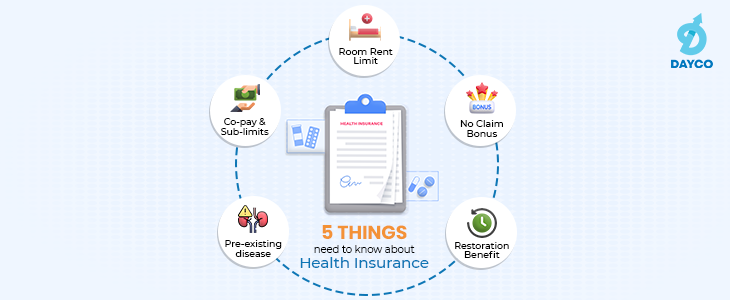An Initial Public Offering (IPO) refers to the process of offering shares of a private company to the public in a new stock issuance. It allows a company to raise funds from the market. Businesses require funds for many reasons. These funding requirements can be met through an IPO. Once a company decides to go public, it launches an Initial Public Offering or IPO. Technically, IPO allows the company to list and trade its securities on the different stock exchanges and raise a large amount of capital. The Securities and Exchanges Board of India (SEBI) regulates the launch and after all the paper works with the company gets over, the IPO is launched. Investors need to understand how to apply for IPO and, more importantly, how to buy IPO online.
IPOs have the potential to offer very high returns to investors. Investing in IPOs can be profitable only if one can make sound choices based on analysis of the company’s prospects. One can apply for IPOs online, keeping in mind that an IPO order cannot be placed directly through your broker. You need to place the order through your bank that provides you with ASBA facility. (As explained later in this article itself)
There are two types of market:
Primary market
In the primary market, the company launches an IPO.In this market that firms sell new stocks and bonds to the public for the first time. Investors can then buy the IPO at this price directly from the issuing company.
Secondary market
The secondary market is basically the stock market where those securities are traded by investors.
Types of offerings made by the company for IPOs:
I. New offer – If the company is raising funds from the IPO market for the first time and the company’s name gets listed on the stock exchange, then it is a new offer. The new offer leads to both listing and expansion of the capital base of the company.
II. Follow-on Offer – It facilitates the promoters of an already listed company to sell their existing shareholdings through an exchange based bidding platform. Like, if the company has already issued shares in the past but wants to raise more funds by selling additional shares, then it launches a follow-on offer.
III. Offer for sale – Here, sometimes, the promoters or major shareholders in the company sell a portion of their shareholding via an IPO. This is known as an Offer for Sale or OFS. In an OFS, the share capital of the company does not increase but it is only the ownership pattern that changes.
Eligibility
Investors those who are competent enough to enter into a legal contract are eligible to apply in the IPO of a company. Note that having a trading account is not necessary in case of IPOs, a Demat account itself is sufficient. However, if you want to sell the shares on listing then trading account will be required. That is why it is advisable to open a trading account along with Demat account when you apply for an IPO for the first time. When you apply for an IPO, it is not an offer but an invitation to offer. Only when the IPO issuer offers you shares, it amounts to an offer.
Mandatory Requirement applying for an IPO online:
To bid online you need a Demat Account and a PAN card.
In the stock market, the price of a share is determined by its demand and supply. Suppose, there is a high demand for a particular share due to favorable factors, the price will increase and vice versa.
A company determines the price of a share in an IPO in two ways:
1. Fixed Price
In the Fix Price method, the company fixes the price of the share. Hence, investors get to know the exact price of the share before applying. Since the demand is noticeable only after the IPO is launched, the company determines this price based on the funds that it wants to raise. So, in case of Fix price, you need to pay 100% of the price of the share at the time of bidding for the share.
2. Book Building
The issuer of the IPO launches an IPO with a price band or floor price at least two working days before launching. Book Building is a mechanism where (within the time period for which the IPO is open) bids are collected from investors at various prices, which are above or equal to the floor price. Investors are asked to bid on the shares by specifying the number of shares they want to buy and the price that they are willing to pay for each share. The offer price is determined (as per demand at each price level) by the company after the bid closing date. There is no fixed price. Here, the basis of allotment is finalized within 10-12 days and once the shares are in your Demat account and the stock is listed on the exchanges you are free to sell shares.
Now let’s look at the process of investing in an IPO online.
How to invest in an IPO online?
IPO is a popular mode of investment as it has the potential to grow wealth in a short period of time.Investing in an IPO is a great way to buy shares as it allows you to invest in a company before the demand and supply of the market affect its price. Here is the process:
1. Decision
The first step is to choose the IPO which you want to apply for. You must determine which IPO you want to invest in. A great way to decide is by going through the company’s prospectus. Every company before launching an IPO, shares a prospectus with the public offering details about the company’s business and future plans. Go through those prospectuses thoroughly and research the company before making a decision.
2. Funding
To be on safer side, before you submit the application, you need funds for a backup. In case of a fixed price or book building issue, usually, the number of shares allotted is lower than that actually applied for by the investors. When a company launches an IPO, it fixes the price or the price band based on the funds that it wants to raise and the price at which it expects to sell all shares. However, in most IPOs, the demand for shares in the issue is much higher than the number of shares issued by the company. As companies allot shares proportionately, investors tend to receive fewer shares than those applied for. If the IPO is not oversubscribed, then you will have to purchase the number of shares applied for. Hence, you need the funds available in your banking account.
3. Mandatory Account creation (Demat – cum -Trading Account)
The following three accounts are required to invest in an IPO and trade them in the secondary market eventually:
Demat Account – In a Demat Account, the shares are stored in an electronic form. So, it is mandatory to have a Demat account to invest in an IPO.
Trading Account – A Trading Account is needed to invest in an IPO online. You can open this account with a brokerage firm or a company that offers stock trading facility.
Bank Account –A Bank Account is required to make payment for the applied shares. This is done via the Application Supported by Blocked Amount (ASBA) facility.
Basic knowledge about ASBA & UPI
SEBI launched a new way of applying for shares in an IPO through ASBA. An easy and efficient way to apply for IPOs.
The Application Supported by Blocked Amount or (ASBA) facility authorizes banks to block the IPO application amount in the investor’s bank account. The advantage of an ASBA IPO is that you do not have to issue a cheque or pay any money for the IPO till the allotment is made. When you invest through ASBA, the funds to the extent of your application gets blocked in your account for the IPO. This amount will not be debited till the allotment date and during this time period, the investor continues to receive interest on the blocked funds too. On the allotment day, once the shares are allotted, the amount equal to the cost of the allotted shares gets debited and the remaining balances were released.
For ex: If you applied for shares worth Rs.100000 lakhs and you got allotment for only Rs.50,000, then only Rs.50,000 would be debited from your account and the block on the remaining amount gets released from your designated bank account.
To use the ASBA option, you need to submit the ASBA application form to your bank.
In 2019, SEBI introduced United Payments Interface or UPI, as a mandatory payment method for IPO applications. Under this option, investors need to specify their UPI ID on the IPO application form and approve the ‘block funds’ mandate on the UPI app.
4. Follow the Application Process
The ASBA facility eliminates the use of demand drafts and cheques. All you need to do is to specify your PAN, Demat account number, Bank account number and Bidding details in the application.
Follow the process of applying for shares in an IPO online :
I. Login to your trading account and select the IPO that you want to invest in.
II. Enter the price at which you want to apply for the shares (in case of book building method) and the number of lots.
III. Fill in the application form completely and provide your UPI ID
IV. Approve the block funds request on the UPI app
V. Your application is done successfully.
Size of lot
Lot size is a number of shares you have to apply for during an IPO. There is a bid price too. The company usually sets the price band. Here, the lowest price in the band is known as the floor price and the highest price is called the cap price. You have to bid for shares in this price range. For example, a company can set a lot size of 30. This means that investors can apply for at least one lot or 30 shares. If you want to apply for more, you can increase the number of lots.
How to Bid in an IPO?
These days IPOs go through the book building process, where the price band is announced. Investors have to bid in this price range. Bidding process is important to ensure that you receive an allotment of shares in the IPO. If the IPO is using the book building method, then
-You will have to place a bid
-Choose the number of lots that you want to apply for
-Lastly a price within the price band.
Let’s understand this process with the help of an example:
XYZ Private Limited launches an IPO with a price band of Rs.205-210 and a lot size of 10 shares. Suppose you want to invest in one lot only. You have the following options:
-Bid at the floor price – The total application amount would be Rs.2050 (floor price multiplied by number of shares per lot multiplied by number of lots = 205 x 10 x 1 = 2050)
-Bid at the cap price – The total application amount would be Rs.2100 (cap price multiplied by number of shares per lot multiplied by number of lots = 210 x 10 x 1 = 2100)
-If you bid anywhere between 205 and 210 (within set price band) – Suppose you bid at Rs.207. The total application amount would be Rs.2070 (bid price multiplied by number of shares per lot multiplied by number of lots = 207 x 10 x 1 = 2070)
So, it is advisable to invest at the cut-off price – The cut-off price is the final issue price of the shares. If you avail this option, then you indicate your willingness to subscribe to shares at any price within the price band.
After the book-building process, suppose, the company reaches a cut-off price of Rs.209. Let’s have a look, what will happen in the four cases as explained above:
I. Floor price bid – You will not be eligible for any share allotment.
II. Cap Price bid – You will be eligible to receive allotment of shares at Rs.209 each.
III. The bid price selected within price band of Rs.207 – Here, as the bid price is less than the cut-off price, hence, you are not eligible to receive any share allotment.
IV. Cut-off price – You will be eligible to receive share allotment at Rs.209
Hence, selecting the cut off option is usually recommended by most experts. Only bidders who quote higher than or equal to the cut off price can get allotment of shares.
Allotment of Shares
As mentioned earlier, demand may outstrip the actual number of shares issued in the market. As soon as issue gets closed, the company determines the cut off price and allots the share as per demand at each price level. So, there is a possibility that you may get fewer shares than you had actually applied for. Sometimes, based on your bid price, you might get fewer shares that have applied for or none at all. In these cases, the bank will unlock your bid money (in part or full).
Once the allotment process is done and luckily if you get a full allotment, you will receive a Confirmatory Allotment Note (CAN) from the company within six working days after closure of the IPO process and the shares will be credited to your Demat account. If the shares allotted are fewer than those applied for, then the extra amount blocked in your account will get released. After that within seven days from the date of finalization of the issue, the shares (that are issued during an IPO) get listed on the stock exchanges.
This article is basically a guide on how to apply/invest for an IPO online and also how to bid for shares of an IPO online. Hopefully this article has given a clear idea about IPO in a whole successfully.
If you have a question, share it in the comments below or DM us or call us – +91 9051052222. We’ll be happy to answer it.
– Satarupa Dutta (Data: Debraj Guha Thakurta)
















